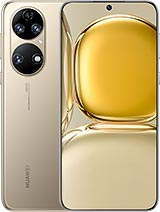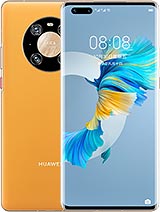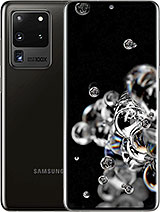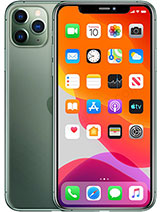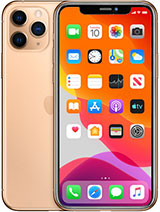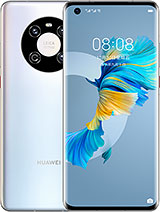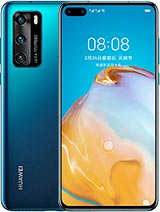Huawei P40 Pro vs Samsung S20 Ultra vs iPhone 11 Pro Max Camera Test Comparison! By Mrwhosetheboss
Okay welcome to what I would say is the camera comparison of the year. I've got the three companies that I would say, make the best smartphone cameras, and these are pretty much their best models. Sir. Welcome to Ally p40 Pro Galaxy S 20, ultra vs. iPhone 11 prompt Macs students to get one thing straight. The p40 Pro Strength is ready in photos, but just before we get to that, the company have made improvements to video to all.
Three phones can record 4k video at 60 frames per second, the Samsung can even do 8k, but that comes with its own set of caveats and I, wouldn't really recommend using it anyways when you're just filming standard video in the daytime, but the main differentiator is really just the style that each company's opted for iPhone sticks closest to reality. Samsung takes that reality and adds a little of extra vibrancy and hallways is just a little. Different gone are the days when Huawei just took the saturation slider and worked it up to max settings. The p40 pros output, if anything, is actually the least saturated in a lot of cases. It's similar to the iPhones, but almost a little fainter, and if you look at the bright areas you can see it does occasionally overexpose.
This brightness, though, may well be in part because of its huge camera sensor, which lets a ton of light in and so when you're in the dark. This potential weakness turns into a strength, and it's pretty much a case of the darker. You go the further behind the other to four. So let's go really dark the kind of Darkness where Samsung's video is looking like a pot-pourri of pixels and the iPhones. Well, you can barely see anything I'm also going to drop the prices of each of these phones on screen right now, just the UK price.
Just to give you an idea of how they stack up relative to each other. The p40 pro is also very snappy. When focusing the phone has a new Akhtar phase detection autofocus system, but to be honest, the iPhone can keep up and can actually do so with a smoother focusing system. Samsung's phone has improved since launch, but I mean it's not great and here's some selfie video, it's kind of amazing we've got smartphone for here that can take phenomenal video on their front cameras, and what are the first things you might be able to tell? Is that always dialed up the audio quality on their phones and their AI? Noise reduction is now fantastic. Also in this of things that always improved, you've got the fact that the company has really pushed the quality of its zoom, and it's ultra light, which you can see here, but they've.
Both comments like caveats, for example, while it was using an ultra-wide camera, built specifically to take cinematic video, then so the output looks great and really consistent with its main camera. Compare that to Samsung, where the quality Falls and the phone kind of punches up. The contrast to try and compensate the trade-off for Huawei is that this ultra-wide isn't really ultra-wide. Okay, the zoom cameras add an even more interesting layer of complexity to this, because before we and Samsung are fantastic, this right here is at six times magnification, and if you take a look at the ducts here, you can see that hallways even edges out Samsung's space zoom or if you one of those people you could just screw it and zoom in 15 times, and it's cool that you can do that and still get well I, wouldn't call it sharp video but a serviceable video. The iPhone keeps it together, but is noticeably less crisp than the other two, but here's the twist.
You could argue that for most of the time you zoom you'll probably be zooming two to four times and in those cases, you'll actually get better quality from the iPhone with the other two we're not quite magnified enough to activate their telephoto cameras, so at this stage they're forced to just using digital zoom with their main cameras- and it's not pretty. Also, if you enjoyed this video, a sub would be amazing. Now almost every clip you've seen so far was actually taken handheld. So you don't need telling. The stabilization is a plus on all three of these phones, but what, if you stopped moving? Well, if you're filming a 4k resolution, a gentle walk is fine.
It'll, look good on all three, but if we up the pace, then the p40 and iPhones footage starts to fall apart. There's just too much motion for them to handle. If you lower that resolution to 1080p each phone improves, but Samsung is king of stabilization. I should say, though, that what Huawei wants you to do with video is use its ultra wide-angle camera that was built for situations like this. So if you switched to that, then even at 4k it does a pretty good job.
Ok, so just before I get to slow-motion I'm itching to address the elephant in the room photo quality, and this is where Huawei shines. You might well know that past phones from the company have had some, let's say interesting, color processing, algorithms, but it definitely feels like this has been tweaked to focus on natural shots with again, as with video, this slightly faded look on default settings. One thing that becomes quite apparent here is the sheer size of the sensors on hallway and Samsung. Large sensors equal big depth of field or in other words, crisp foregrounds and nicely blurred backgrounds, you're almost taking photos that look like portrait mode shots without actually needing to use fake portrait mode. If you actually do use portrait mode like here, you can obviously have as much background blur as you want, and I'd say: iPhones have been the gold standard for portrait mode for a while and even though Huawei has made leaps and bounds that doesn't change here.
All phones take good quality ultra-wide photos during the day, at least, but as with video quite apparent as Huawei's, not so wide-angle, Samsung and apples. Shots are just more dramatic zoom when taking photos is maybe the most interesting part of this comparison on paper. You might think that who always got this one in the bag. After all, it has 5 times, optical zoom versus Samsung's four times, but not quite Samsung. Zoom camera may have less magnification, but it has a higher resolution so for photos when you start zooming in crazy numbers.
Samsung has more room to crop inside its image. The big question, though, for a lot of people is which one captures more detail. The qua way has a 50 megapixel main camera. Samsung has a 108 megapixel one and Apple 12. So if you take a max resolution shot on each and crop all the way in the result is about what it sounds like on paper.
But here's the thing almost all the time you won't be capturing max resolution photos they take time to process, they suck up a ton of your storage, and they have less dynamic range. So by default, all phones are set to a much lower resolution. Twelve point five megapixels on Huawei and twelve for the other two. So in terms of general, photo detail there really isn't that much in it, but wait there's another twist. A lot of the photos.
I take, and I'm sure are the ones that you take they're, not in ideal lighting conditions and as soon as you start, moving away from daylight, hallway steamrolls. If we crop into this shot here, there's an immediate difference in how much information is being captured. If we go darker, that trend is somewhat exaggerated. Again, this is not using the night mode on the phones, just Auto. The only thing I would say about whoa is that it sometimes can slightly overcompensate on cool tones when shooting in low-light.
What about night mode then? So each of these phones comes with a night mode that lets you hold them steady for a few seconds and capture more information and to give you an idea. This is that same photo taken using night mode on all three back to normal and night modes. You can probably tell the iPhone sees the biggest immediate gain from this piece of software and will always barely change so to reiterate, if you're, just shooting on auto mode on all the phones, p40 feels like a literal generation ahead. If you are going to use night mode, though the providing things aren't too dark. All three are great, then, to be honest, which smartphones photo you prefer is more of a style thing as opposed to one being explicitly better than the others.
But if you get really dark, then something starts acting up when things get so dark that Samsung can't draw out finer details, then, rather than just keeping the image dark like the iPhone, does it have a tendency in night mode to just brighten, anyways, and I think it looks pretty odd. I tried this on both X Enos and Snapdragon s xx ultras, and they behaved. Similarly. Now this image was taken in almost pitch black. You can't tell nightmare on smartphones is getting good, but what I wanted to show here is how always focused on making all of its cameras good, not just its main one, but, for example, flicking into ultra-wide.
The difference is just phenomenal, especially when compared to the iPhone and I love. This idea that I can use whichever lens I want to suit the shot I'm trying to capture, as opposed to feeling like I, need to use my main camera, because my ultra-wide sucks the same goes for zoom. This is using the five times zoom in pitch black, like I, couldn't see what the p40 Pro is seeing right now, the s20 ultra and iPhone aren't too pretty. However, there are two ways to deal with the dark. One is a night mode sure, but the other one is flash and Chloe has added an insanely bright flash module onto its phone.
Of course bright is good, but if it's too bright and the software doesn't deal with it accordingly, you end up with photos like these. The camera tends to severely under expose to try and compensate for the extra brightness. The detail is still there. If you manually brighten it, it looks good, but no matter how hard I tried to take this photo. It would always come out dark on Huawei.
Alright, let's slow things down for a minute. Literally, all three phones can take slow-motion footage to varying degrees. You've got continuous slow-motion up to 240 frames per second and I. Think, on balance, the iPhone takes the nicest looking slow-motion footage, but the other two can do something that the iPhone can't shoot bursts of super slow-motion footage, and you're only telling that the p40 pro is inherited. The frankly nuts super slow motion from the May 230 pro last year.
It's so slow! It is unreal. You could almost say it's borderline boring to watch, but with this kind of frame rate, your entire perspective on the world is different, Apple and Samsung. Also, let you take slow-motion on your front cameras. It's cool to have I. Guess I've not used it once outside a testing environment.
But that brings me to the front cameras generally, and it's never been a closer battle when it comes to selfies Huawei edges out on detail, but for most people I, don't think that's a biggie for front-facing photos, and they've all got an awesome, selfie portrait mode ? so which phone do you think one who always phone is still on early software, so it might improve, but Michael and conclusion is that iPhone is still the king for video, but its leaders shrinking over its Android counterparts and also that my favorite phone for photos is now the p40 Pro thanks for watching. My name is Aaron. This is mister who's, the boss, and I'll catch you in the next one.
Source : Mrwhosetheboss

